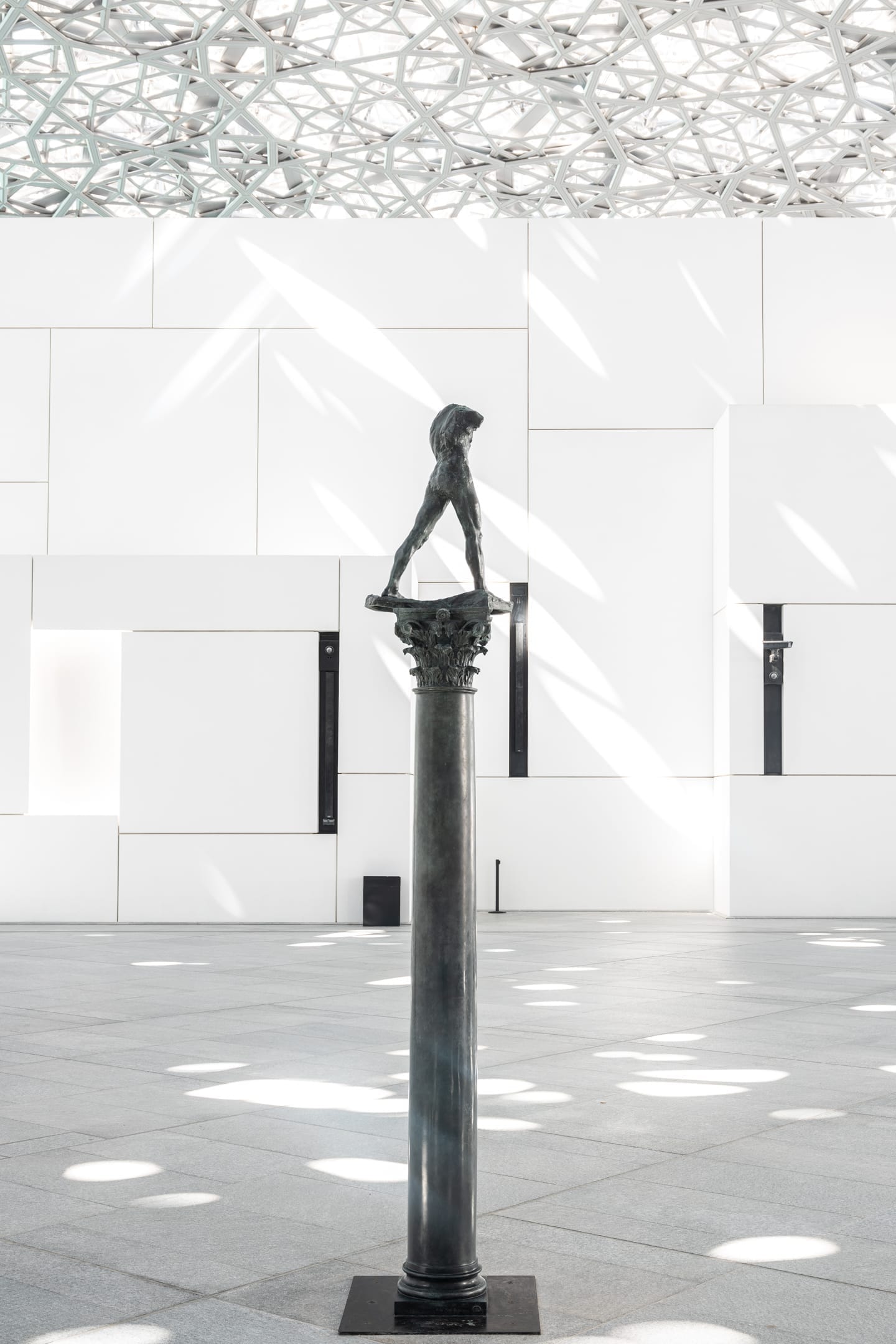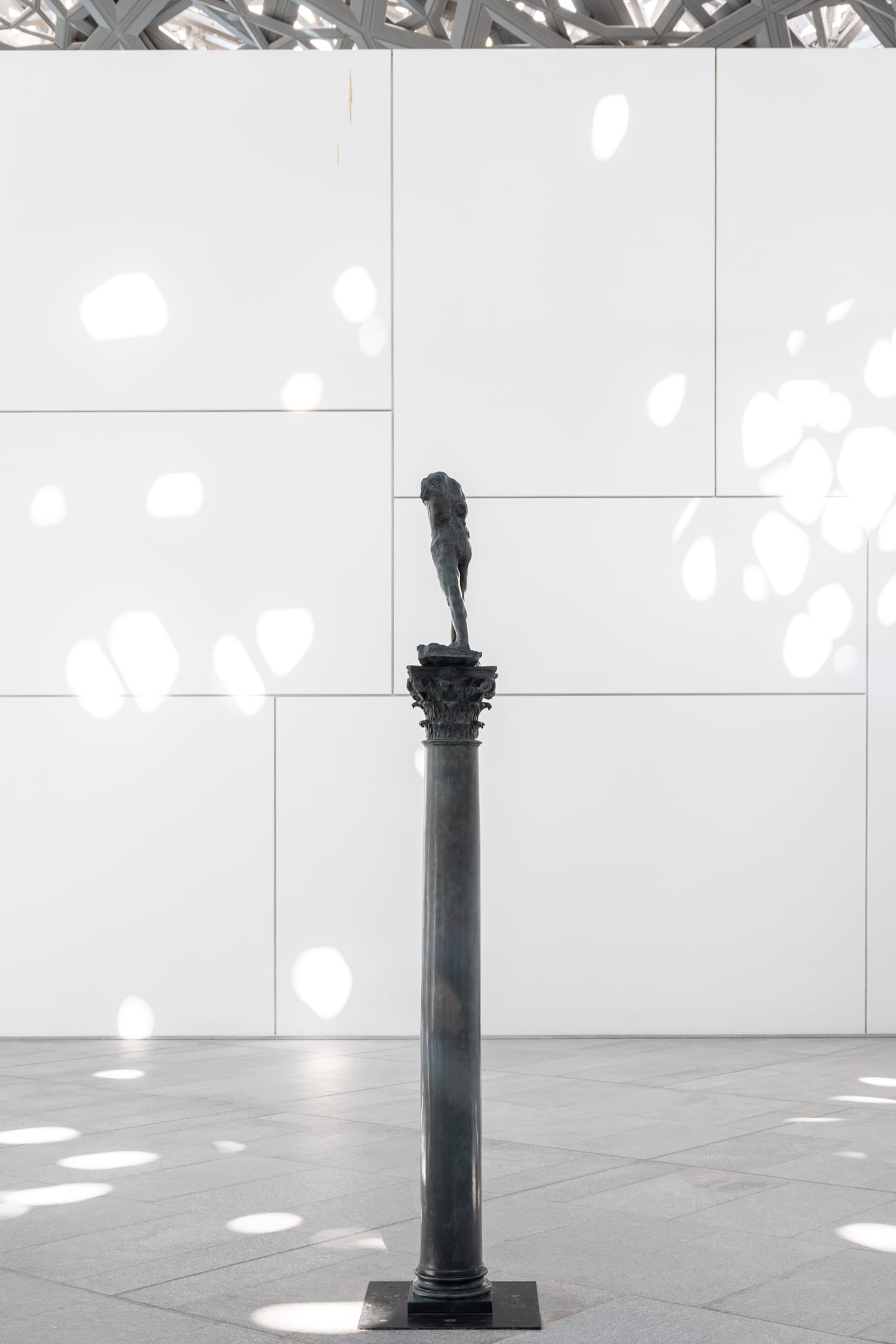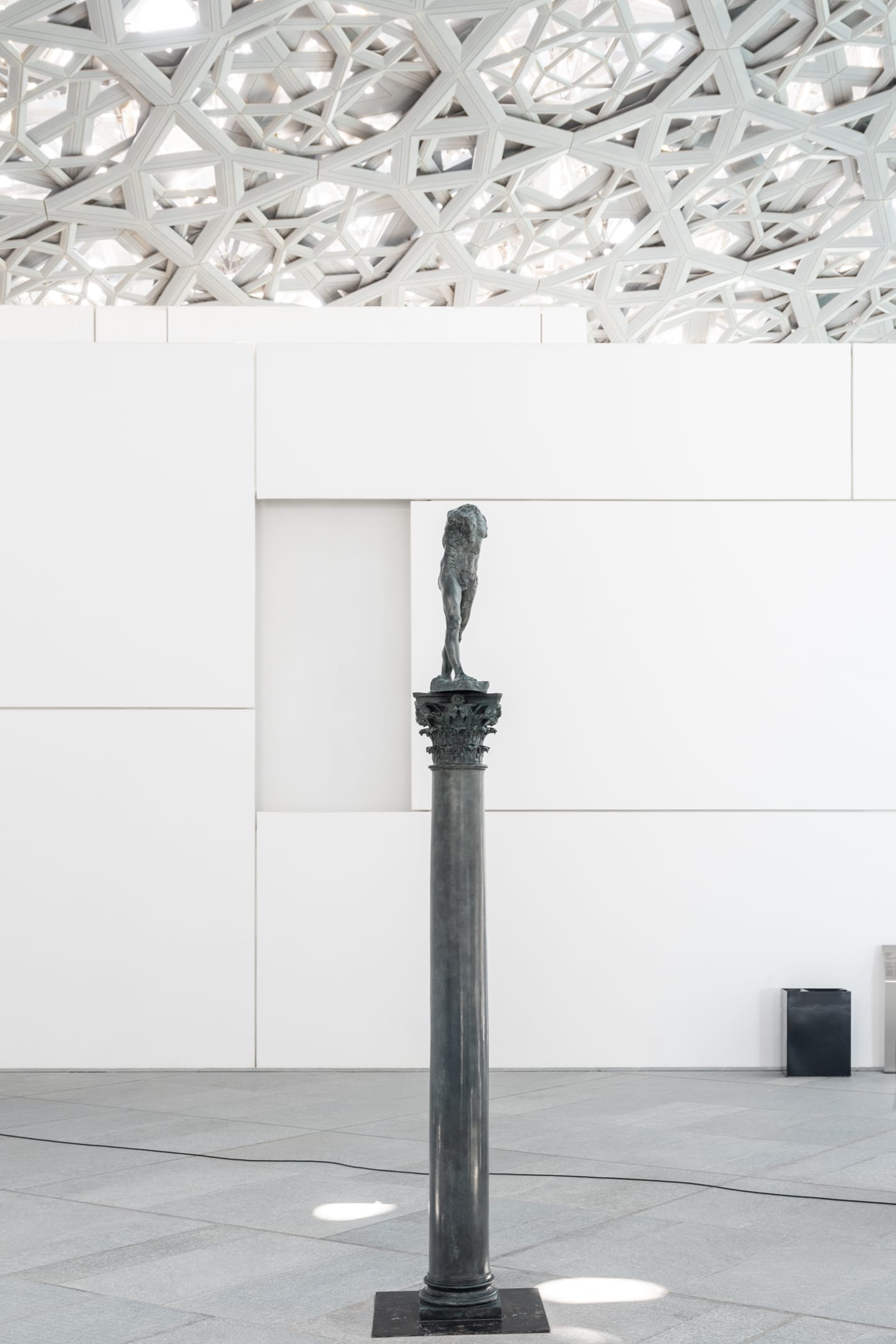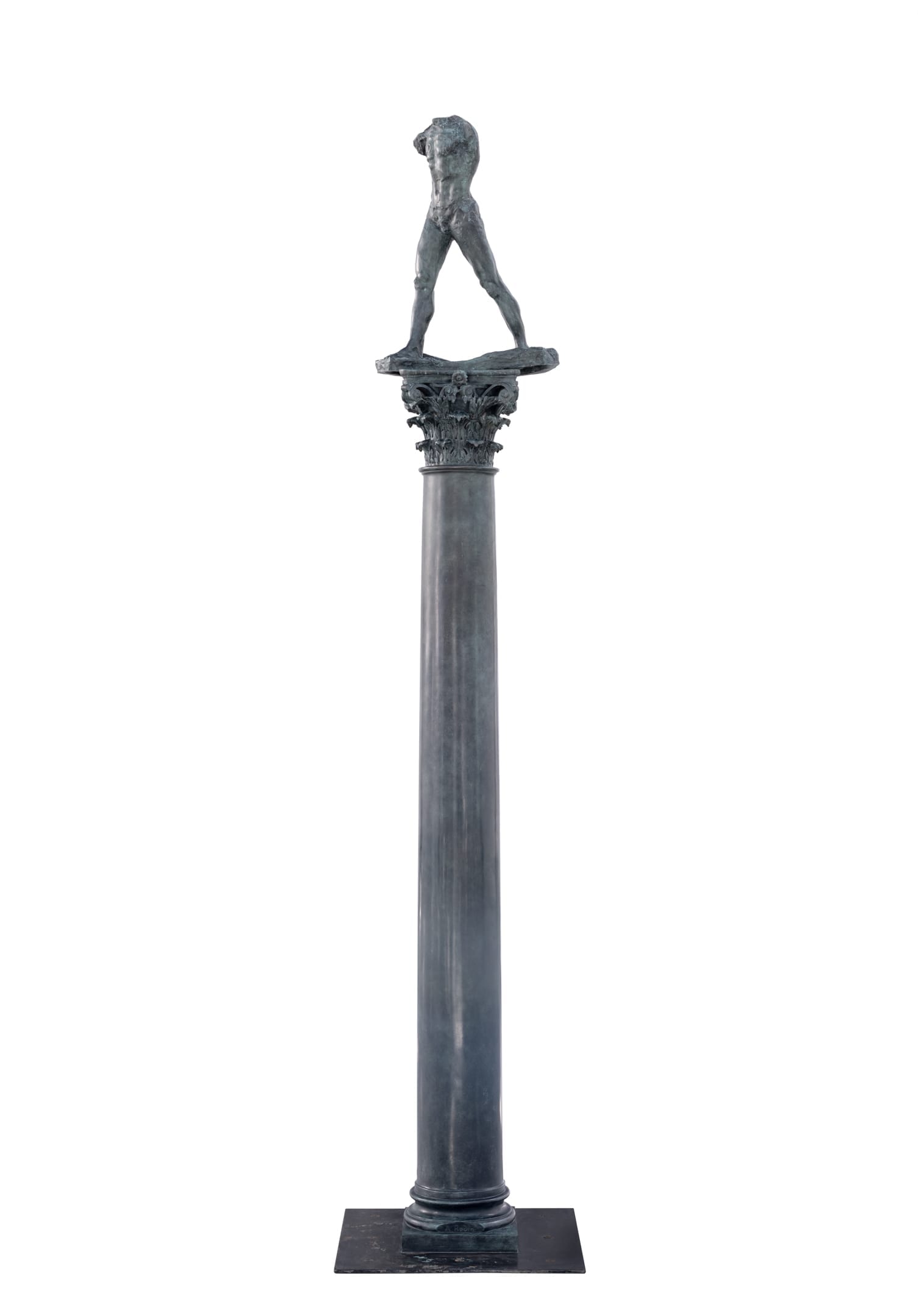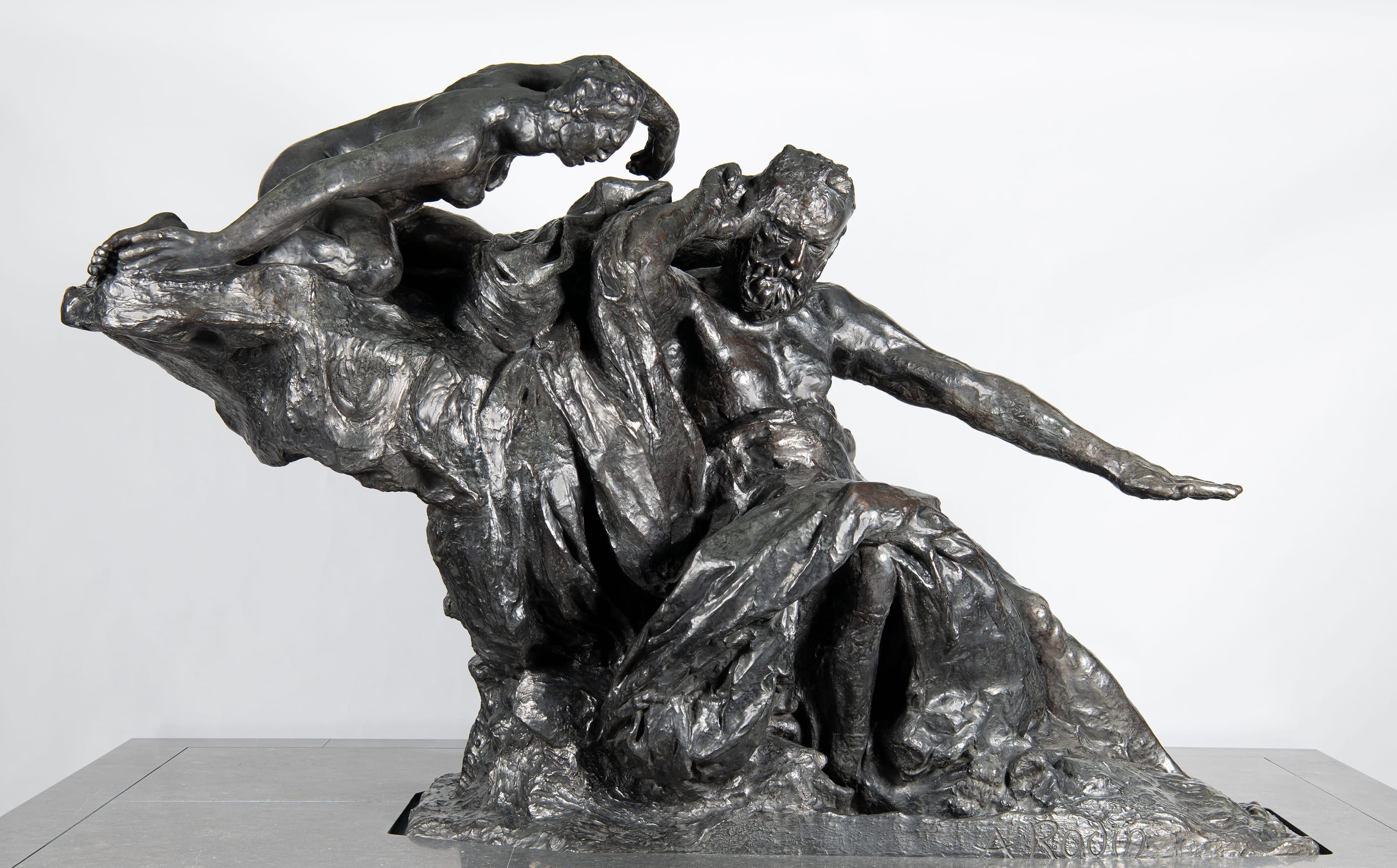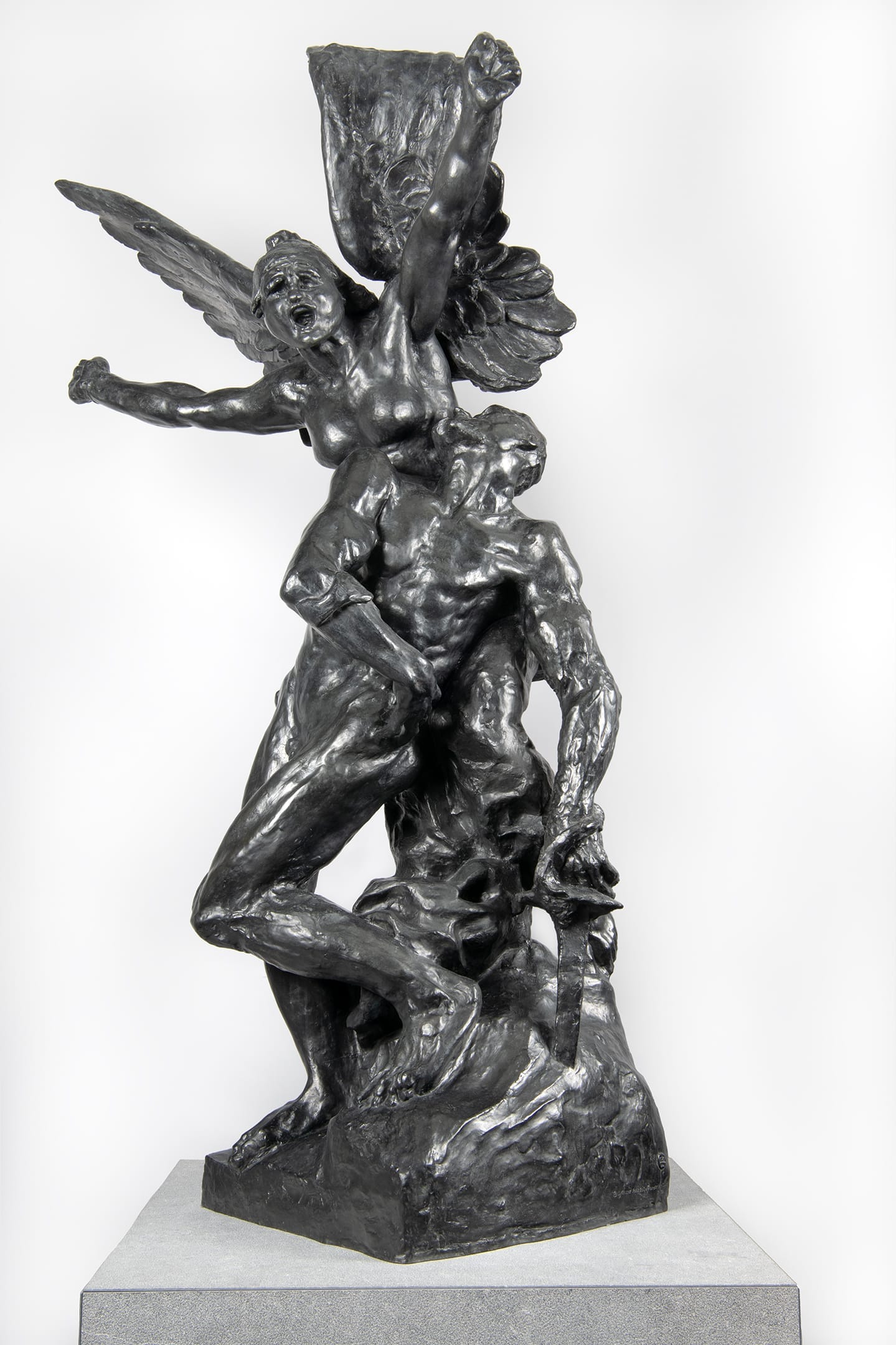To coincide with the Paris World’s Fair of 1900, Rodin organised an exhibition of his work in a pavilion erected on the Place de l’Alma. The exhibits included this small sculpture perched on a column with a Corinthian capital, for which he assembled two fragments of a "John the Baptist", the torso leaning forward and slightly rotated on a pair of legs to impart dynamic movement to his "Man Walking". While the figure, devoid of head and arms, recalls an ancient statue, the decision to preserve the torso in the form of a fragment and free the sculpture from any superfluous detail exemplifies the artist’s very modern approach.
